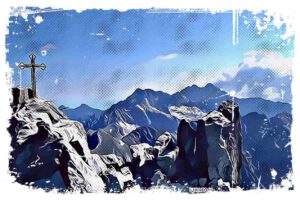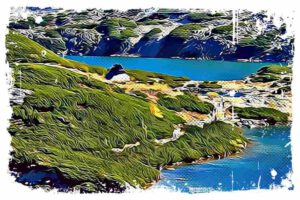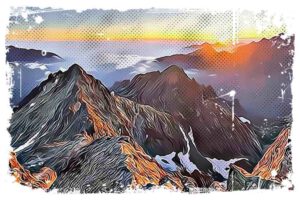Let me tell you a story about Tatra deaths in 1925 that had everyone talking back in the day. It took place on August 7, 1925, in the Tatra Mountains, where a mysterious tragedy occurred that remains unexplained. The headline of „Ilustrowany Kuryer Codzienny” newspaper announced on its front page: „Three New Victims of the Tatras”. Newspapers from that time speculated that a crime must have happened. Even the famous Witkacy wrote about the incident in letters to his wife.

The Ill-Fated Journey
There were four people on this trip. Kazimierz Kasznica, a 46-year-old Warsaw prosecutor, his 38-year-old wife Waleria, their 12-year-old son Wacław, and a young but experienced mountaineer named Ryszard Wasserberger, who was 21.
They were making their way down from Lodowa Przełęcz (Ice Pass) towards the Jaworowa Valley. Waleria led Ryszard and her son to a boulder that provided shelter from the strong wind. Ryszard, being tall, struggled to stand up straight.

Kazimierz gave Ryszard some cognac and his son a piece of chocolate, then went back to check on his husband. He found the prosecutor lying on the path, freezing and barely conscious. There was no way to communicate with him. Waleria gave him some brandy and returned to her dying son. She watched helplessly as Ryszard passed away too.
↳ Before you head to Tatra Park, I highly recommend reading my complete guide to Tatra Mountains. I showcase the most scenic places you won't want to miss. Make sure to check it out, so you don't overlook anything interesting: Tatra Mountains – An Insider’s Guide to All Attractions and Info
You may also want to read: Uncovering the Mystery of Two Abandoned Planes in Poland
I can tell you that on that tragic day, three healthy people died in unexplained circumstances while descending from the main ridge of the Tatra Mountains in the middle of summer. This mystery still puzzles people to this day, and if you want to learn more, you need to know that the case remains unsolved.
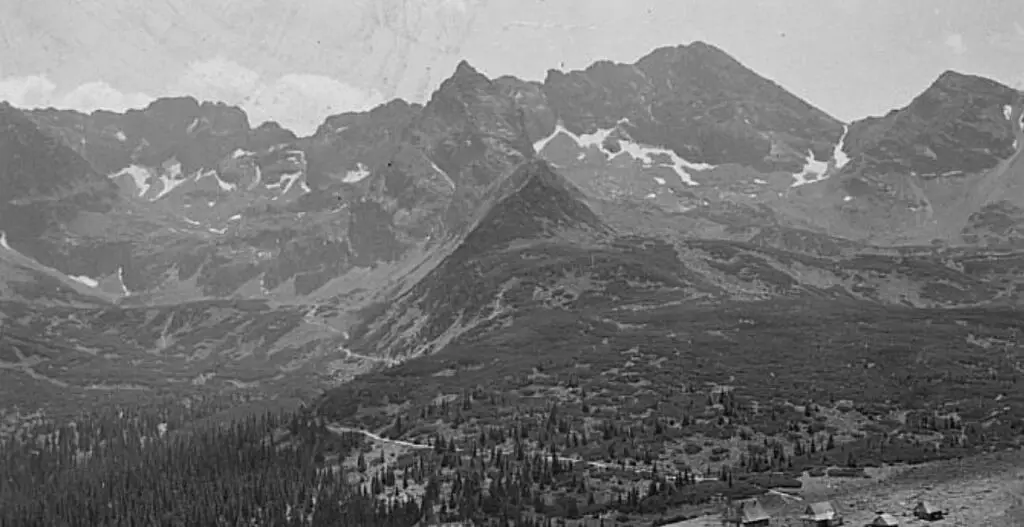
The Coldest Day of Summer and a Lonely Vigil
On August 3, the weather reports marked it as the coldest day of the summer of 1925. Waleria, the lone survivor, kept watch over the bodies of her son, husband, and guide for 37 hours. She had a spirit stove and a blanket from one of the backpacks to keep her warm.
Back then, the Tatra Mountains weren’t as crowded as they are today, so after waiting for help for two days, she decided to go down to the valley on her own. There, she encountered Mariusz Zaruski, head of the Tatra Volunteer Search and Rescue (TOPR), who organized an expedition to recover and transport the bodiess.
95 Years Later – The Haunting Mystery Continues
Even now, after 95 years, the deaths of the Kasznica family and young guide Ryszard Wasserberger continue to raise speculation and send chills down our spines.
Kazimierz Kasznica had taken his family to the Tatra Mountains for a vacation. On the morning of August 3, they were at Téryho chata, the highest Tatra shelter open all year round.
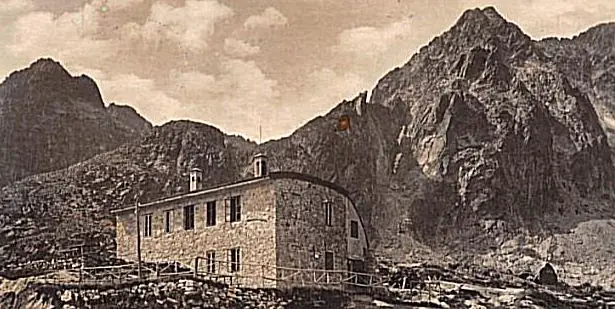
Meanwhile, in the Valley of Five Spiskie Ponds in the Slovak part of the Tatra Mountains, a group of four skilled mountaineers – Jan Szczepański, his brother Alfred, Stanisław Zaremba, and Ryszard Wasserberger – were preparing for their journey. Wawrzyniec Żuławski described Wasserberger in his book „Tragedie Tatrzańskie” as an „outstanding individuality” in terms of climbing abilities and character.
I believe it’s worth mentioning that Żuławski wrote:
„An outstanding youth socialist activist, despite his young age, he aroused respect for his virtues of mind and character not only among his friends but even among the fiercest opponents”.
The Tatra Mountains became his true passion in life, and he loved them with the zeal of an adventurer and the sensitivity of an intellectual.
Kazimierz, unfamiliar with the Tatra Mountains, approached this professional mountain team for advice. Despite the heavy rain and winds that could reach 100 km/h on the ridges, the young mountaineers decided to return through Sedielko in Slovakia – the highest mountain pass in the Tatra Mountains, traversed by a tourist trail.
A Challenging Trail and Unfavorable Conditions
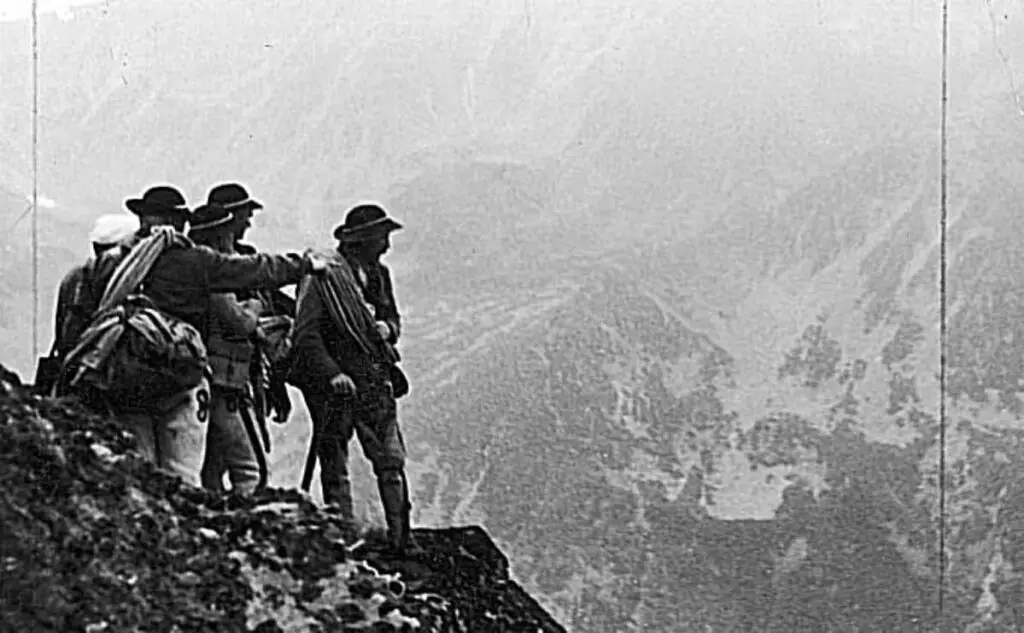
The trail from Téryego shelter, situated at an altitude of 2015 meters above sea level, to Lodowa Przełęcz at 2372 meters above sea level is described in guidebooks as difficult and physically demanding. The distance between these two points is only 1.87 km, but for this short stretch, you have to overcome a vertical difference of over 300 meters among sliding stones and in unfriendly conditions with poor visibility.
You may also want to read this article: Understanding the Risks – Tatra Mountains Death Statistics
The contour lines on the map are so dense that it’s hard to tell them apart. Walking time is estimated at approximately one and a half hours.
On the other side of the pass, the trail descends more gently towards Jaworzyna Tatrzańska, a village located at the entrance of the seven-kilometer-long Jaworowa Valley. In good weather, this picturesque route shimmers with the colors of its rich flora and should take less than five hours to complete. However, the Kasznicas found the trip to be an ordeal due to the high humidity and rain that soon turned into wet snow.
For Wasserberger’s group, as Żuławski writes:
„passing Lodowa Przełęcz even in the worst weather conditions was not a problem – it was simply the shortest way back to Zakopane”.
That’s why the young guides decided to help the inexperienced tourists in crossing the highest pass. Wasserberger, known for his eagerness to assist the weak, agreed to accompany the family.
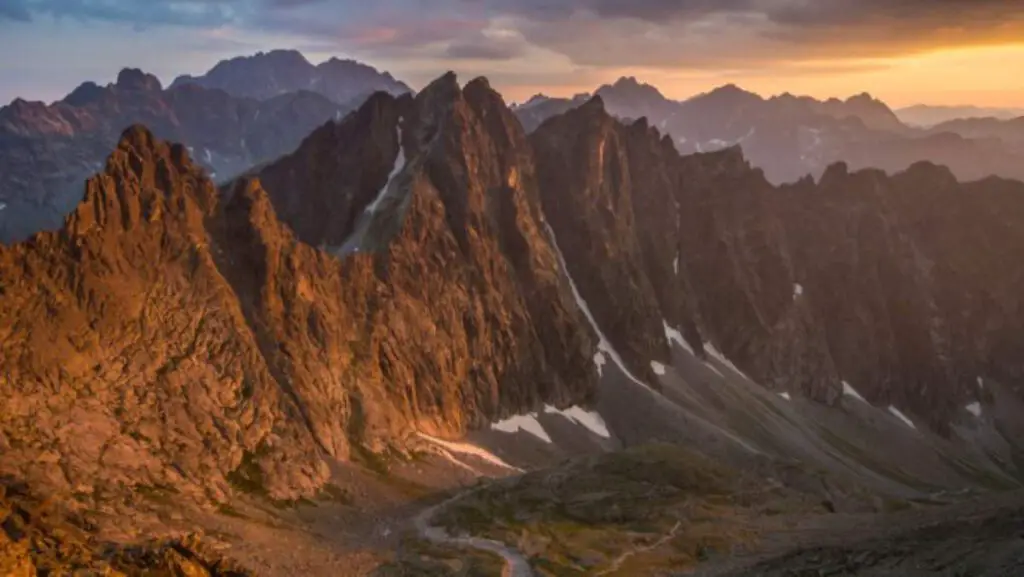
An Ill-Fated Escort and a Broken Rule
Both groups left the shelter around 12:30 pm, but the first difficulties soon emerged. The prosecutor, in poor physical condition and nearsighted, walked slower as the freezing rain blurred his glasses. The irritated Szczepański brothers and Zaręba decided to separate from the group.
Initially, the climbers planned to draw lots to decide who would stay with the Kasznicas, but Wasserberger took responsibility for the family and committed to guiding them „to the end”.They parted ways at the foot of Sedielek, at the height of Lodowy Stawek (2158 meters above sea level). In doing so, the young climbers broke an unwritten rule of mountain tourism:
finish the trip with the same group you started with or, at the very least, don’t lose sight of your companions.
Questions and Speculations Surrounding the Tragedy
At first, it was believed that Ryszard stayed with the Kasznicas solely for noble reasons. However, later speculations suggested that he might have been in worse shape that day and thus chose to go slower.
Regardless of the reasons, the entire group should have returned to Terinka by then. The slow pace, lack of skills, terrible weather, temperatures of 0-2 degrees Celsius, and the knowledge that they were not even halfway there were enough justification. This was especially true considering they had young Wacio in their care, as we’ll later learn from the shared grave with his father.
Yet, the worst weather was still to come – on the pass itself, where, according to Kasznicowa’s account, they stopped around 3:30 pm.
Żuławski writes:
„When they reached the pass, hail hit their faces and a powerful wind of almost hurricane intensity”.
Wasserberger urged them to hurry, reasoning that the wind would be weaker further down. During the descent, young Kasznica began to complain about losing his breath. It was there that they began to die.
At an altitude of 1,886 meters, Kasznica’s son, followed by his father and Wasserberger, stopped their journey, citing a sudden loss of strength. The prosecutor said,
„I’m very tired… I can’t go on…” and collapsed.
Kasznicowa’s first impulse was to seek Wasserberger’s help, as the strongest and most experienced in the group. But then, she heard his terrifying response:
„I also feel very weak…”
The prosecutor briefly regained consciousnes and asked about Wacek. When Mrs. Kasznica returned to her son, she found his lifeless, cold body. Wasserberger attempted to get up and descend a few steps, but fell, injuring his hand and head. He died shortly after, delirious and calling for his mother. The autopsy revealed he had broken his arm in the fall.
A Mystery That Baffled the Nation
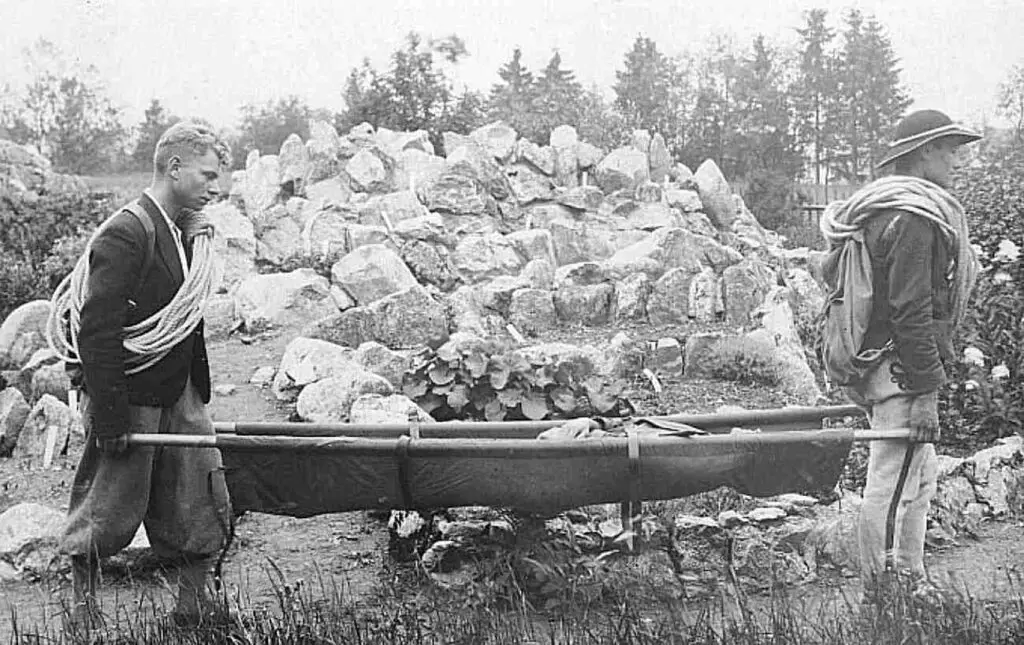
The tragedy quickly became a major topic in the press and among the public. What really killed these three people of different ages? How is it possible that a young, strong, and experienced mountain climber like Wasserberger perished, while Waleria Kasznica survived? These questions continue to haunt us, as the mystery surrounding this tragic event remains unsolved.
In the wake of the tragedy, both scientific and conspiracy theories emerged. Some speculated that the members of the expedition were poisoned by the cognac given by Kasznicowa (who was the only one who didn’t drink alcohol, although she reportedly took a few sips while waiting by the corpses).
Others proposed a whirlwind or weather phenomenon – an air vacuum that „suffocated” the men. However, none of these theories held up, and during the investigation, it was shown that the deceased were not poisoned.
One of the most popular theories came from mountaineer Roman Kordys, who believed that the difficult weather led to the exhaustion of the group members, and that alcohol given in this state, even in small amounts, could act as poison. However, the men started dying even before Kasznicowa gave them the cognac.
The autopsy conducted by Dr. Ciećkiewicz revealed more about the deceased’s health. None of them were in good health. Kasznica’s son had calcified tuberculous foci in the lungs, enlarged tonsils with pus plugs, and an enlarged heart. The prosecutor had gallstones, adhesions near the gallbladder, meningeal fibrosis, and incipient atherosclerosis. Both he and Wasserberger had „laundresses’ skin” on their hands and feet, a dilated left atrium, and several unusual abrasions on their bodies.
Interestingly, August 3, 1925, was a terrible day for a mountain trip. On that dreadful Monday, two highlanders, aged 38 and 14, also died on Babia Góra. They, too, had symptoms caused by exhaustion, as Dr. Ciećkiewicz pointed out. All these deaths, according to the doctor, were cases of „mountain sickness„, characterized by muscle exhaustion, reduced reflexes, and dizziness, ultimately resulting in death.
„These bodily symptoms are constantly accompanied by mental symptoms in the form of more or less complete indifference to their threatened fate. The sick are unable to make the slightest effort of will to save themselves”.
For 90 years, the prosecutor’s wife was considered one of the suspects, but it is now believed that she was the fourth victim of those events. After the accident, she never recovered mentally. She died seven years later, one day after the anniversary of the tragedy.
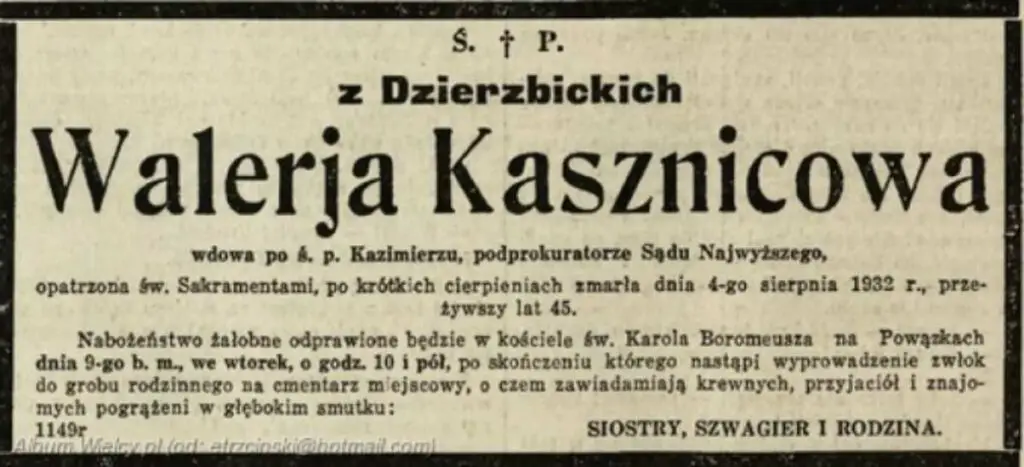
Her matress, searched by the family, was found to be full of incriminating newspaper clippings. The main source of these long-standing insinuations was „L. Sz-i”, under which Ludwik Szczepański, the father of Jan and Alfred, hid – the brothers who, along with Zaremba, left Wasserberger and the Kasznica family, as it turned out, to a certain, though mysterious, death.
References:
- https://tvn24.pl/magazyn-tvn24/trzy-dni-czuwala-przy-cialach-gdy-zeszla-z-gor-okrzyknieto-ja-morderczynia,190,3281
- https://podroze.onet.pl/polska/z-dreszczykiem/tajemnica-lodowej-przeleczy-dlaczego-zaczeli-umierac/lhmh6fv
- https://weekend.gazeta.pl/weekend/1,152121,26166538,tragiczna-smierc-w-dolinie-jaworowej-schodzac-z-przeleczy.html#s=BoxOpMT
- https://krakow.gosc.pl/doc/5877141.Czy-Waleria-moze-spac-spokojnie/2

